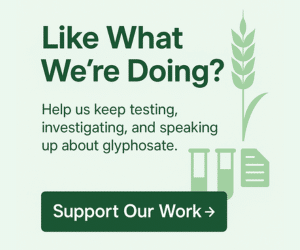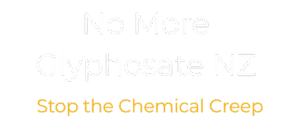Stories like this are rarely told. Not because they don’t happen — but because the people who live them are often dismissed, ignored, or left feeling alone.
We recently shared Leonie Bartrom’s story, tracing how glyphosate reshaped her son’s early life in the late 1980s. Today, we share another account — this time from 2002 — that begins with a split-second exposure and turns into a decades-long reckoning with silence, loss, and the systems that continue to look away.
Because behind every chemical approval is a real human life. And sometimes, change starts with a single moment.
This is Liz’s story.
It Began With a Breeze, a Song — and a Biff of Chemicals
Meandering along a cliff-faced road in 2002, windows down, music loud, sun on my face — I didn’t have a care in the world.
Until a wet biff of liquid hit me square across the face.
Startled, I looked to my right. A helicopter was descending over the ridge to spray the paddocks below. In that split second, my idyllic day shattered. My face, my eyes, my mouth, my hands — all drenched in whatever it was spraying.
Somehow, I kept the truck steady on the narrow winding road. Ten minutes later, I was home — shaken, blinking, unsure what to do. I made a desperate phone call.
“No problem at all!” the man said cheerfully. “Just stick your head under a cold tap.”
So I did. I followed orders, rinsed my face, and tried to forget.
Back then, glyphosate wasn’t something I feared. Everyone had a bottle of Roundup in the shed. It was just part of life.
But I began to notice things — subtle at first. Headaches. Skin issues. Strange new allergies. I mentioned it to a few people over the years, but the response was always the same:
“Come on, glyphosate’s as safe as houses. You can drink the stuff!”
I offered them a cup once. No one took me up on it.
The Organic Dream Turned Chemical Nightmare
Years later, I bought a lifestyle block with hopes of living naturally and going organic. But my dream turned fast.
A neighbouring poultry farmer was spraying all the surrounding paddocks with a cocktail of chemicals — glyphosate included — to boost his grain crop. That chemically grown grain was proudly fed to his egg-laying hens. I was told it was “innovative.”
He even gave me a sheaf of papers listing 123 chemicals he used. I was speechless.
I tried to talk with him. I also spoke with the helicopter pilot. It was surreal. Both men were proud of their work and saw no harm in it. They laughed at my concerns.
As they turned to leave, I said to the pilot:
“Just don’t come back and tell me when you get cancer.”
He laughed. Confident. Untouchable.
He died of cancer a year later.
The Bees Came to Die
By then, things had already turned bleak. Both my neighbours had cancer at the same time. She died.
And then came the bees — not just disappearing, but actively dying.
A local beekeeper’s hives collapsed. The bees flew to their deaths, landing lifeless outside my bedroom window. I’ll never forget it.
I couldn’t stay. I moved away.
But the spraying never stopped.
I’m Not Done Yet — Even If I Can’t Stand for Council
At 72, I had planned to return home and stand for local council. I felt — and still feel — a deep need to speak up about what’s happening in this country.
But sometimes, reality intervenes. For now, those plans are on hold.
Still, that doesn’t change what I believe — or why I care.
Fluoridation mandates. Gene editing. And now, a proposal to increase allowable glyphosate residue levels by up to 9900 percent?
How is that even feasible?
It makes no sense. And more importantly… why?
These aren’t small changes — they’re massive shifts with potentially massive consequences. I may not be standing for council anymore. But I’ll never sit back and do nothing.
A Note from NoMoreGlyphosate.nz
This is just one voice — but it echoes loudly in a landscape of silence.
Liz’s story is a reminder that glyphosate exposure isn’t just theoretical. It’s personal. It’s real. It lingers. And it often goes unacknowledged until it’s too late.
We’re proud to share this lived experience with permission. Because it matters. Because she matters. And because so many others still haven’t found the courage — or the platform — to speak.
When the Laughter Stops
When someone says, “Don’t come back and tell me when you get cancer,” and that person does — shouldn’t that be the moment we stop laughing?
It’s time to stop pretending this is harmless. Time to stop taking industry reassurances at face value. And time to listen to the people who’ve been there.
Because behind every “safe” approval is a story just waiting to be told.
→ Sign the petition
→ Share this story
→ Join our testing campaign
Let’s make sure this doesn’t happen again.
Further Reading
- Glyphosate and Lymphoma: Are We Asking the Right Questions?
- Glyphosate and Bee Deaths: Where Have All the Pollinators Gone?
- MPI’s Proposal to Increase Glyphosate Residue Limits
- How Glyphosate Gets Into Our Food
- Join the No More Glyphosate Testing Series
Image Source & Attribution
We’re grateful to the talented photographers and designers whose work enhances our content. The feature image on this page is by Anetlanda.




